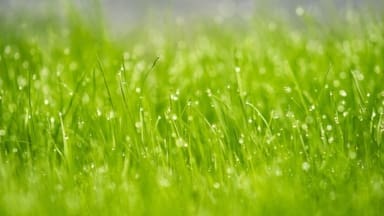
The use of native grasses in our lawns makes for good lawn care, says the Lawn Association. David Hedges-Gower explains that native grasses flourished, pretty much without human intervention, in every lawn before the mid 1990’s. These resilient grasses reportedly maintain their green hue, are largely free of weeds and are more capable of withstanding the occasional summer drought.
Since the 1990s commercial interests led to the introduction of a new strain of grass, derived from cattle feed and that is visually indistinguishable from its predecessors. The new incumbent infiltrated our gardens, promising success but according to the Lawn Association team, is constantly delivering failure. “When these lawns falter, the remedy offered is perplexing—add more of the same grass that failed initially, blaming things such as heavy foot traffic or the dogs for their demise (which isn’t the true cause)”, said Hedges-Gower.
“Turf companies of course, sell vast quantities of this flawed grass, who have it supplied by seed companies, who then market to retail. Garden centres, then market these same seeds as a solution to the very problem they helped create. It seems inconceivable, doesn’t it? Turf engineered to fail, only to be “fixed” with the same defective grass”, he adds.
Hedges-Gower says that countless homeowners have been sold “a bill of goods—a counterfeit, a failure in the making. And all fall for it too. The power of marketing over the truth”. Apart from the costs of failure, the issue extends beyond mere grass where it has bred contempt for the concept of a lawn, leading some to embrace synthetic alternatives or pave over their once-vibrant front gardens.
The Lawn Association therefore advises UK gardeners and the industry beyond to embrace native grasses. The two main native grasses – bent and fescue make for the ideal choices for your lawn. Steer clear of the new builds which have a selection of seeds called ‘heavy wear’ or ‘family lawn’ which fundamentally are known as ‘ryegrasses’. Ryegrass is a single seed and a single plant, comprising of a few leaf blades. Fescue will be a single grass seed evolving into many tens of leaf blades and bentgrass will be the smallest seed of all, turning into hundreds of blades. Native grasses bind the turf to give a good density, are generally strong and give good shade protection to help root systems cope with the heat.

